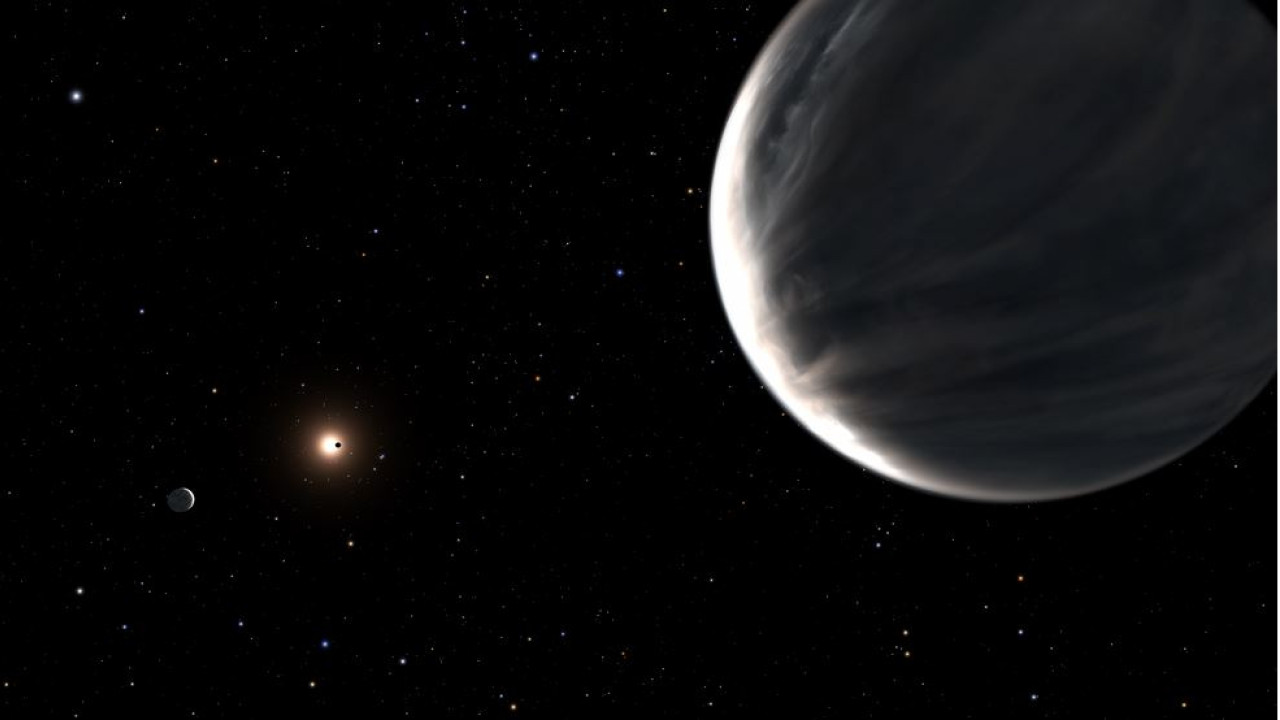
Scientists have concluded that up to half of their volume may consist of water – the exoplanets were spotted 218 years from Earth, in the constellation Lyra.
A team led by researchers at the University of Montreal has found evidence that two exoplanets orbiting a “red dwarf” star are “water worlds” with a very large part of the planets covered by water. These worlds are located in a planetary system 218 light years from Earth, It is in the constellation Lyra and is unlike any other planet in our solar system.
The team, led by Caroline Piaulet of the University of Montreal’s Trottier Institute for Exoplanet Research, has published a detailed study of this planetary system, known as Kepler-138, in the journal Nature Astronomy.
Beaulet and her colleagues observed the exoplanets Kepler-138 c and Kepler-138 d with NASA’s Hubble and retired Spitzer space telescopes and discovered that the planets may consist largely of Water. These two planets and a smaller planet closer to the “red dwarf” star, Kepler-138b, were previously discovered by NASA’s Kepler Space Telescope.
The new study also found evidence of a fourth planet.
Water has not been directly detected in Kepler-138 c and d, but by comparing the sizes and masses of the planets with their existing models, astronomers have concluded that a significant proportion of its volume — even half — must be composed of lighter material. of rock and heavier than hydrogen or helium (which make up most gas giant planets such as Jupiter). The most common of these candidates is water.
“Previously we thought that planets that were slightly larger than Earth were large balls of metal and rock, which is why we called them super-Earths,” explained Bjorn Beneke, co-author of the study and professor of astrophysics at the University of Montreal. . “However, we have now shown that these two planets, Kepler-138 c and d, are very different and that a significant proportion of their total volume is likely to be water. It is the best evidence yet for water worlds, which astronomers have long believed existed. “.
“Imagine some kinds of moons like Europa or Enceladus, orbiting Jupiter and Saturn, however much closer to their starPiaulet explained. Instead of the surfaces being frozen, they contained large “envelopes” of water vapor.
The researchers warned that the planets may not have oceans like those on Earth directly on the planet’s surface. “The temperature in Kepler-138d’s atmosphere is likely to be higher than the boiling point of water, and therefore a dense atmosphere is expected on the planet. Only below this vaporous atmosphere can liquid water exist at high pressure,” Beaulet said.
A new exoplanet in the system
The two possible water worlds, Kepler-138 c and d, are not in the habitable zone, the region around a star where temperatures allow water in liquid form to exist on the planet’s surface. But the researchers found additional evidence of a new planet in the system, Kepler-138 e, in the habitable zone.
This newly discovered planet is small and farther from its star than the other three stars, and it takes 38 days to complete one orbit. However, the nature of this extra planet remains an open question because it does not appear to pass through its star. Observing the transit of an exoplanet will allow astronomers to determine its size.
The researchers had another surprise: They discovered that the watery worlds Kepler-138 c and d are “twin” planets, with Same size and mass, while previously it was believed that they are completely different. On the other hand, it has been confirmed that the nearest planet, Kepler-138 b, is a small planet of mass Mars, and it is one of the The smallest of the outer planets that we know to this day.
“As our instruments and technologies become more accurate at detecting and studying planets farther from their stars, we may start to find more of these water worlds,” Beneke concluded.
source: skai.gr
Read them today’s news And get the latest news.
Follow Skai.gr on Google News and be the first to know all the news.

“Total alcohol fanatic. Coffee junkie. Amateur twitter evangelist. Wannabe zombie enthusiast.”





More Stories
Is this what the PS5 Pro will look like? (Image)
Finally, Windows 11 24H2 update significantly boosts AMD Ryzen – Windows 11 performance
Heart Surgeon Reveals The 4 Things He ‘Totally Avoids’ In His Life